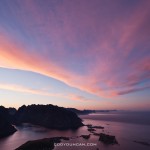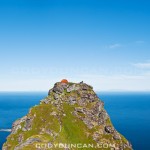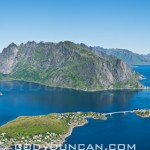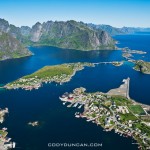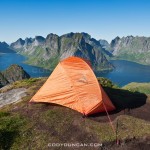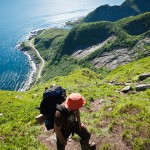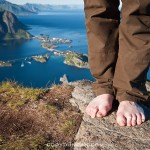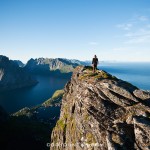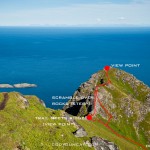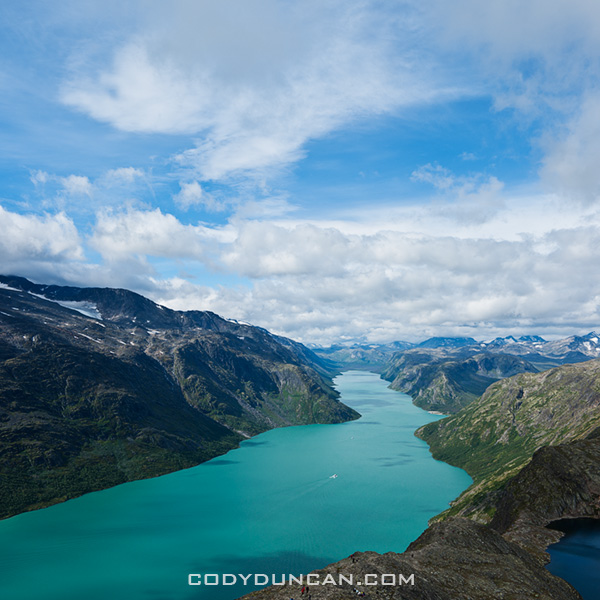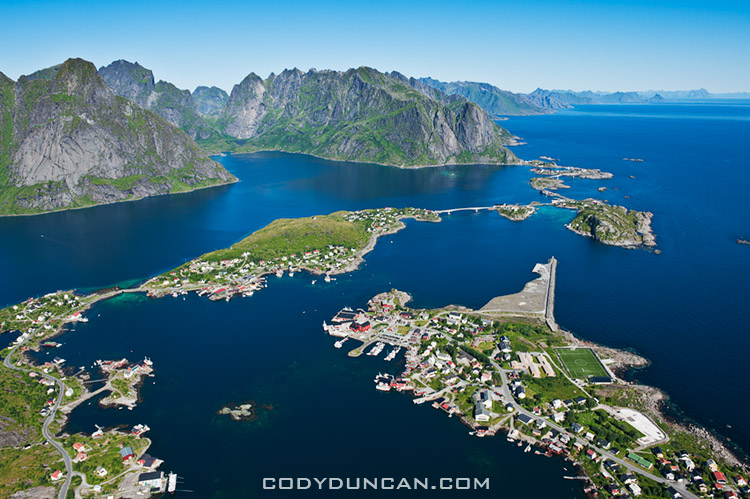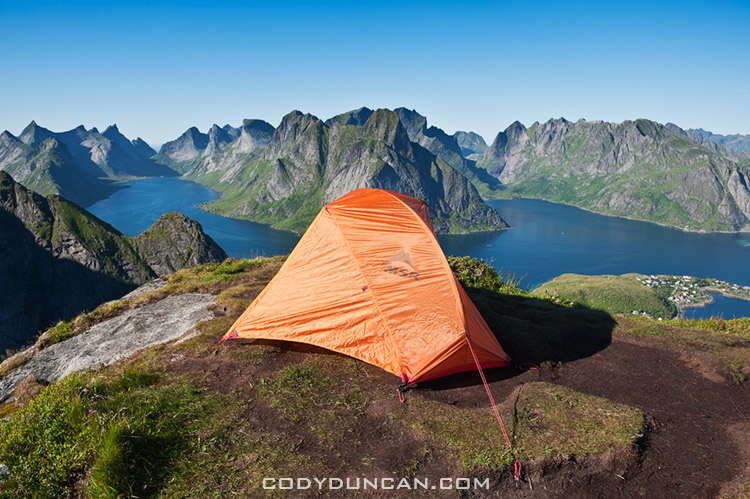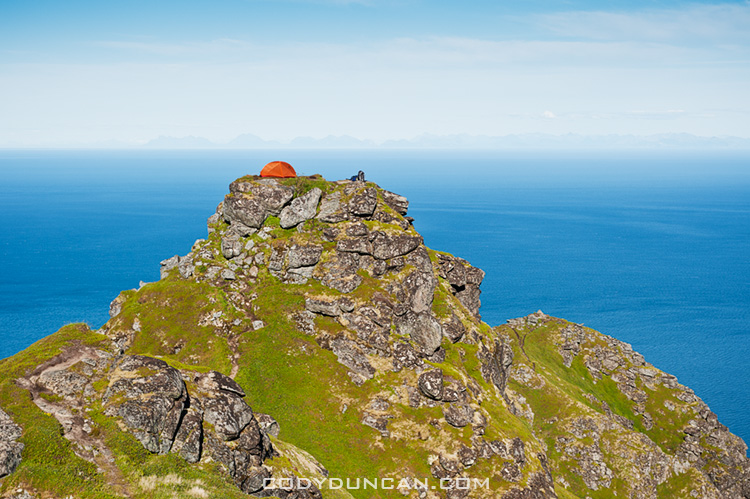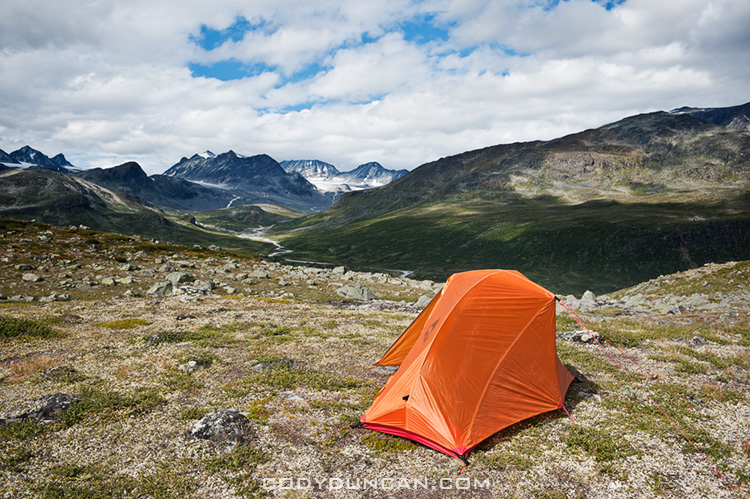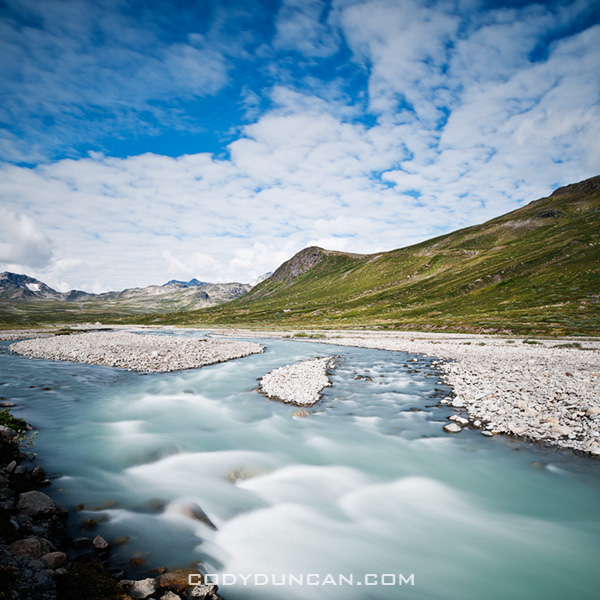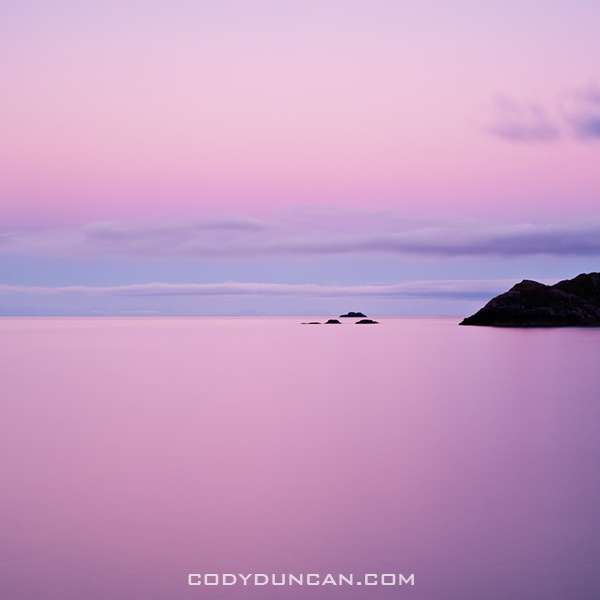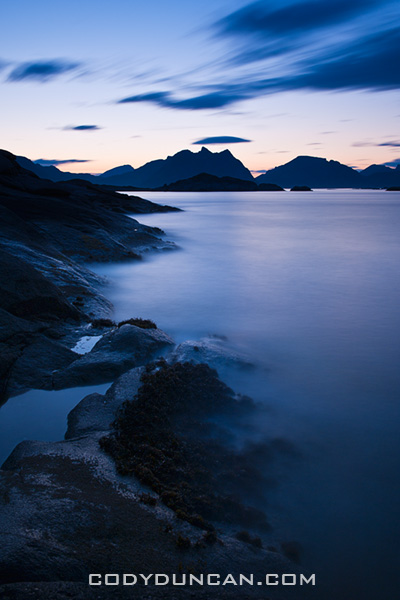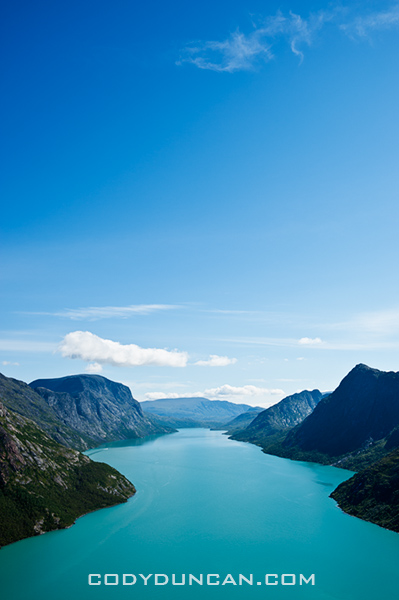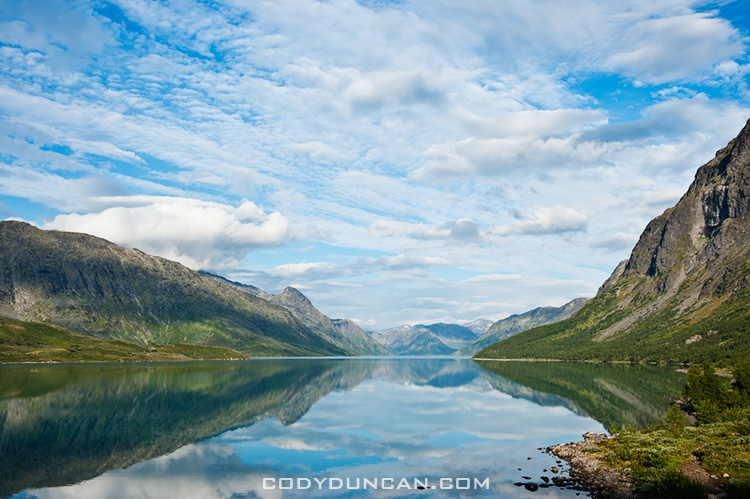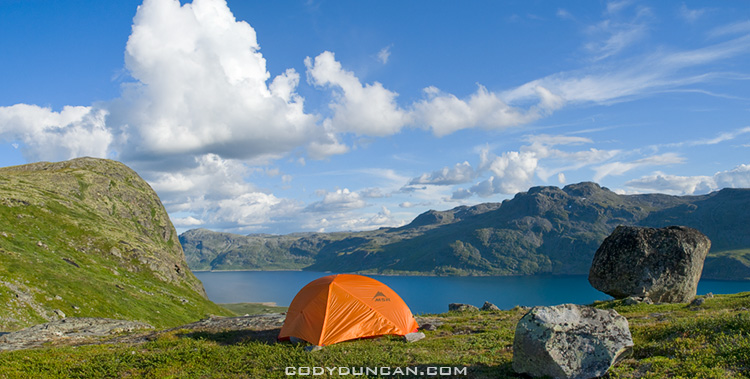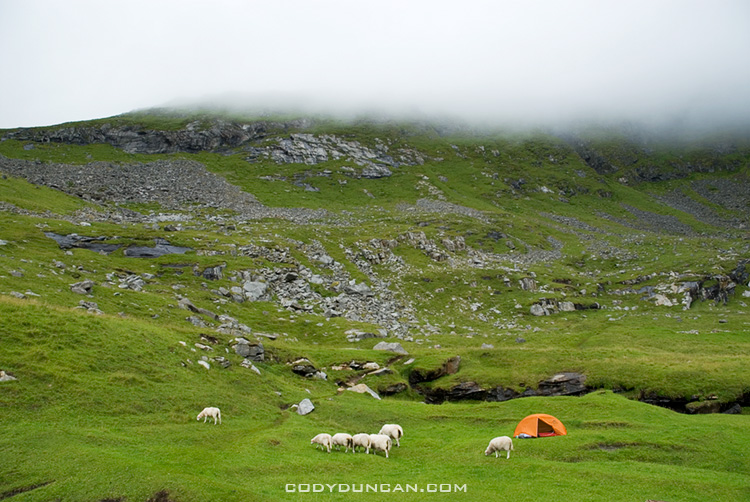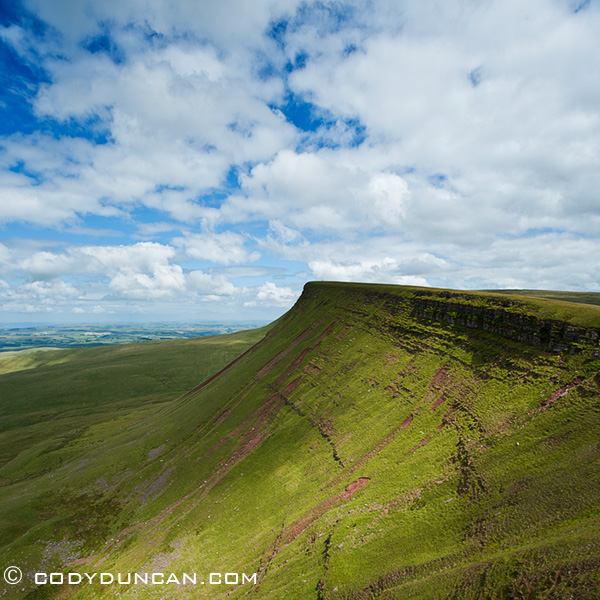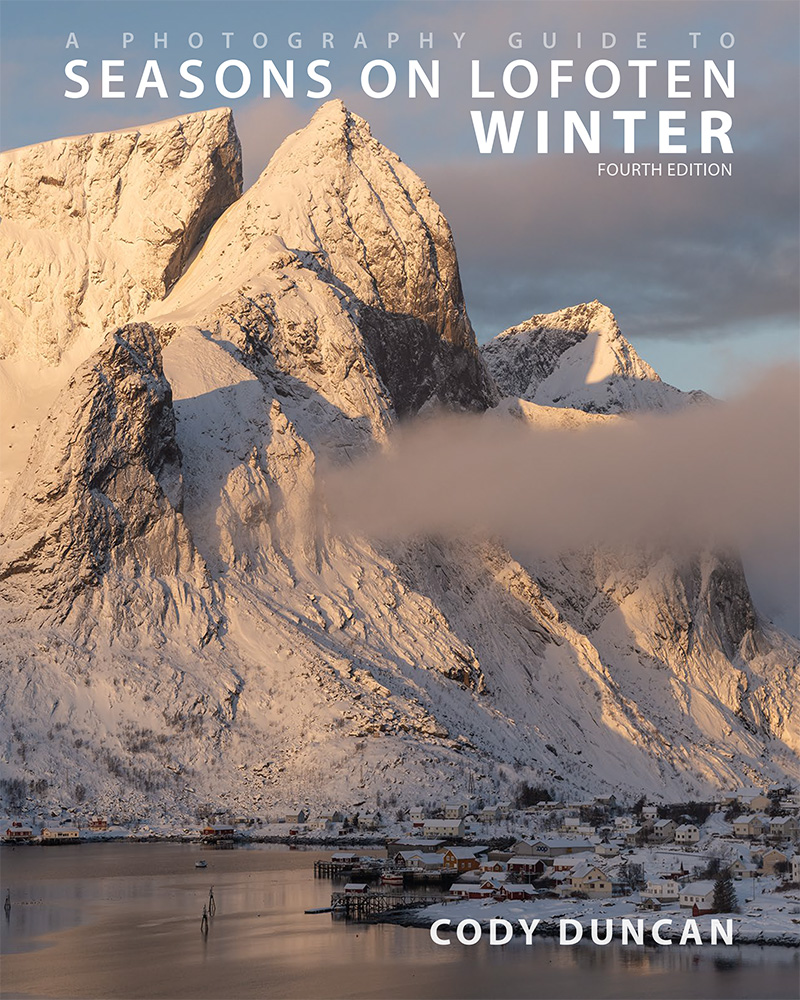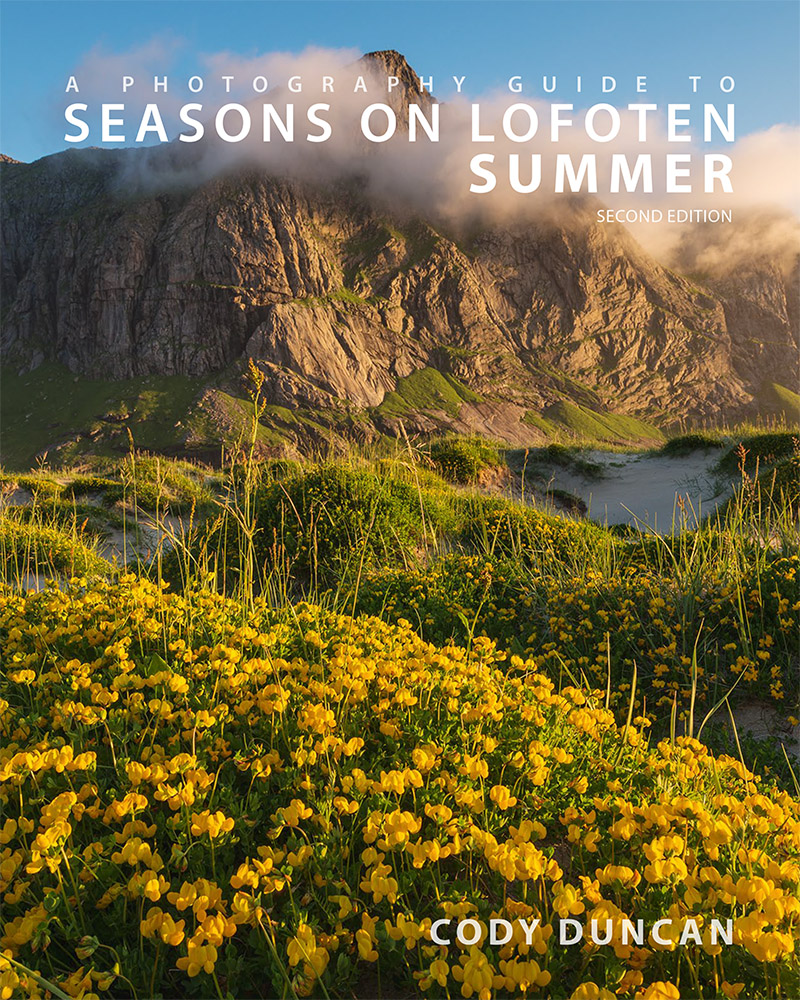Lofoten Islands Hikes – Reinebringen

Photo: Scenic view over Lofoten islands from summit of Reinebringen
Lofoten islands Hikes: Reinebringen
At a modest 448 meters high, Reinebringen is far from one of the highest peaks on the Lofoten islands. Yet this is more than made up for by the spectacular view provided from the summit. This view, combined with a relatively short hike and easy access from Reine means that Reinebringen is one of the most popular hikes on Lofoten. It should definitely be near the top of ones travel plans while visiting the islands. And if possible, saved for one of those elusive sunny days.

Directions
• By car: Drive towards Reine. At the corner of the E10 and the turnoff into Reine is a parking area. Alternatively, on the Å side of Ramsvikstunnelen are several small pullouts along the E10.
• By Bus: Take the bus to Reine. You can ask the driver to let you off on the side of the E-10, before heading down into the village.
From Reine: walk west (south) along the E10 in the direction of Å. Take the paved path along the outside of the tunnel (Ramsvikstunnelen). Where the path is close to connecting back with the E10 on the far side, look for a small trail emerging from the bushes. In summer it should be fairly simple to locate.

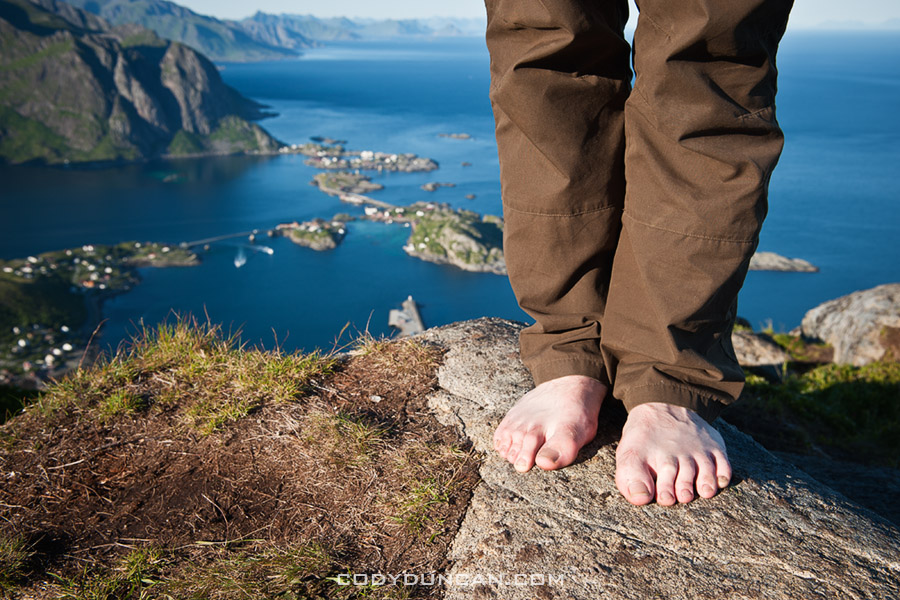
The Hike
The trail begins as a somewhat muddy path winding its way upwards through low birch forest. I managed to keep my feet dry wearing only trail runners, but it took a bit of extra care. Climbing higher up the mountain, the trees begin to thin and and one will come across several short but wet rock steps to negotiate. Once clear of the forest the trail gradually steepens and alternates between turf (which can be wet/slippery) and rocky sections. Finally reaching the ridge, many stop here as the view is already quite stunning. One can continue to the right up the steep rocks and follow the short trail to the last small peak. Alternatively, one can follow the trail towards the left which continues high up the ridge. 3-4 hours, depending on fitness level, should be adequate for a round trip.

Camping
There are several places along the ridge where a tent can be pitched. All are completely exposed, so be aware of conditions and any incoming weather. No water is available near the top, so be sure to bring enough.
Useful Links
Topo Map: enter ‘Reinebrinen’ in the search box
Images


